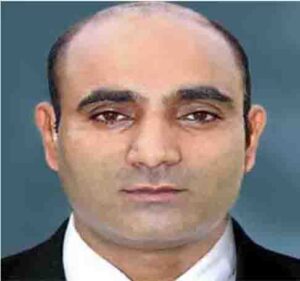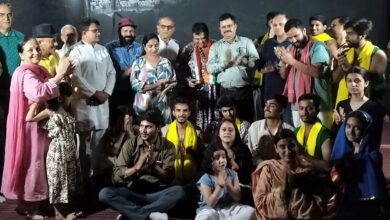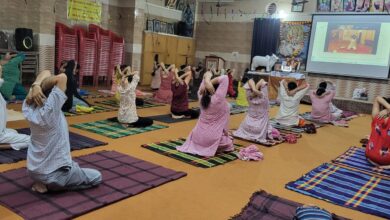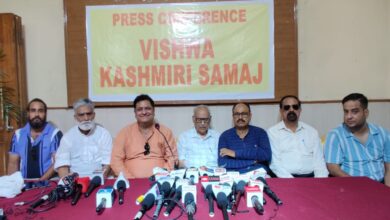Modi’s Ambitious Targets, Hindutva Narrative, and Economic Imperatives Set Stage for Historic Showdown
Lok Sabha Election 2024

King C Bharati
The 2024 Lok Sabha elections in India are poised to be the most closely watched and analysed since the country’s Independence, especially following Prime Minister Narendra Modi’s declaration that the NDA will surpass the 400-mark this time, while urging its cadre to focus on achieving the 370-mark for the BJP alone.
This marks perhaps the first time that PM Modi has set such a challenging target, which some view as an uphill task. Analysts of the political landscape suggest it might have been a political manoeuvre to prepare voters’ minds for the big day and capitalize on Modi’s ever-growing popularity, particularly after the Pran Pratishtha of the Shri Ram Temple in Ayodhya.
Though the BJP has been steadily strengthening its foothold in North India, it still lags behind in the South. However, with PM Modi and Home Minister Amit Shah leading the charge, efforts are underway to attract voters from the South, not only on the Hindutva platform but also on developmental issues.
The installation of Sengol as a national symbol of the Amrit Kaal and Adheenam (Priests) repeating the ceremony and vesting the PM with the Sengol marked the beginning of establishing a connection with South India, referred as ‘South Push’, by invoking Hindutva as a national brand.
Modi’s ‘South push’ signifies a strategic shift aimed at strengthening the Bharatiya Janata Party’s (BJP) presence in historically less-aligned regions, particularly in southern states.
This concerted effort acknowledges the BJP’s historical under-representation in the south and seeks to address political, economic, cultural, and geopolitical dimensions.
Despite facing challenges such as entrenched regional identities and historical political affiliations, recent electoral successes in states like Karnataka have emboldened the BJP’s expansion efforts. PM Modi’s engagements, including visits to temples and launching development projects, underscore a multifaceted strategy emphasizing political consolidation, economic development, cultural integration, and strategic positioning in the region, aligning with broader economic imperatives and the need for inclusive development across southern states.
Although Prime Minister Narendra Modi and his Bharatiya Janata Party (BJP) made a significant impact in the 2019 elections, particularly in northern India, securing over 300 seats, their performance in South India was relatively modest. Since then, Modi and the BJP have maintained their dominance across various spheres, including Parliament, media, social media platforms, and grassroots activism, in their efforts to woo voters across India, particularly in the South.
The opposition alliance, INDIA, which initially posed a challenge, has stumbled due to internal conflicts and organizational weaknesses within the Congress Party and other political ambitions of its allies. Notably, key allies like Nitish Kumar from Bihar have switched allegiance to the BJP-led National Democratic Alliance (NDA), further solidifying the ruling party’s position.
With an extensive grassroots network support by the Rashtriya Swayamsevak Sangh (RSS), Modi has set ambitious goals, aiming for 370 seats for the BJP and over 400 for the NDA. The BJP’s electoral strategy relies on its well-organized machinery, technological expertise, financial resources, and an ever-growing popularity of its PM Narendra Modi.
The recent Pran Pratishtha of the Ram Temple served as a pivotal moment, reinforcing the BJP’s narrative of fulfilling Hindu aspirations. Modi’s central role in the ceremony was likened to a coronation, symbolizing his leadership in shaping a new narrative of inclusivity within Hinduism.
Aside from capitalizing on Modi’s popularity, the BJP’s campaign emphasizes two main themes: projecting India as a strong Hindu nation on the global stage and promising economic prosperity for its citizens.
The BJP acknowledges the importance of addressing economic concerns as well, learning from past electoral setbacks. Factors such as erratic weather patterns, policy fluctuations, and the plight of landless farmworkers have contributed to rural distress, prompting a re-evaluation of economic policies and welfare measures.
As the election nears, the BJP’s messaging emphasizes the need to protect democracy and tackle internal threats, reflecting the party’s commitment to its ideological principles. The election outcome will not only shape the political landscape but also gauge public sentiment, indicating what voters actually prioritize in the new Bharat.
On the economic front, while India is facing challenges, it has shown the world how to overcome crises like COVID-19, which has been noted with awe and inspiration globally.
However, while the BJP has made progress in various policy areas, including infrastructure development and social welfare programs, critics and opposition parties argue that these efforts have not fully addressed the root causes of inequality and poverty.
Even as the BJP focuses on slogans of Hindutva revival and development, the opposition sticks to old discourses of unemployment, caste census, and minority appeasement, refusing to adapt to the new dynamics of India’s political landscape.
On the other hand, regional dynamics and identity politics continue to influence voter behaviour, particularly in states with distinct cultural and linguistic identities. The BJP’s efforts to expand in traditionally non-BJP states, along with alliances with regional parties, reflect its strategic approach to gaining support across diverse constituencies.
The role of technology and media in shaping public opinion cannot be overstated, with social media platforms and digital communication channels playing a central role in political discourse. Parties leverage these platforms to disseminate their messages, engage with voters, and mobilize support, blurring the lines between traditional and new media.
Ultimately, the outcome of the 2024 general election will determine the government’s composition and provide insights into India’s evolving socio-political landscape. It represents a critical moment in the country’s democratic journey, where the aspirations and priorities of millions of citizens converge to shape the nation’s future trajectory. As political parties gear up for the electoral battle, the stakes are high, and the outcome will resonate far beyond the ballot box.
(Author is a senior journalist and can be reached on [email protected])







